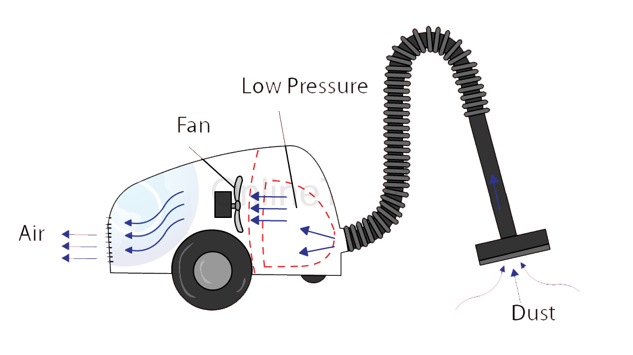Introduction
Every person in their home has more than one dozen household items, which greatly simplify life. From now on, all daily tasks are solved with the help of a specially designed device, including a dust collection with a vacuum cleaner. Studying the principle of operation is essential for further repair, therefore, this essay will show in detail how the vacuum cleaner works and how the device’s specific characteristics affect the result.

Principle of Operation
It should be noted that the principle of operation of the device directly depends on the task to be solved: while the classic vacuum cleaner is designed for suction of dust particles from the floor, more high-tech forms are modified by built-in detergents for wet cleaning or have design that allows for cleaning even hard-to-reach areas. The basic idea is that by running the internal motor in the casing, a low pressure is created that stimulates the particles to be sucked in through a long tube. In order to expand the application’s scope, manufacturers complete the devices with different nozzles that allow the cleaning of carpets or furniture. Often, the end of the air tube is modified by hoses, which provide dispersed water under pressure (Fig. 2). This effect allows for improved cleaning of longwall surfaces by knocking out dust particles with water jets.

Dust Collection
The dust and dirt in the pipe must eventually get somewhere: for this purpose, a cloth bag is placed in the plastic’s body of the vacuum cleaner, the only hole connected to the beginning of the air pipe (Fig. 3). In this way, suctioned particles of dust, debris, and dirt are directly deposited in the bag, which can be replaced when filled.

Air Filtration
It should be noted that the motor circulates dust and mud air flows, which can get out of an airtight shell – ultimately, all collected garbage will be thrown out. Moreover, such a situation is hazardous, as dusty air, penetrating through the respiratory tract of humans and pets, will settle on the lungs, causing serious illness. To prevent that, air filtration is used in vacuum cleaners Traditionally, either fabric membranes or more advanced hydro stations are used as filters.
Conclusion
In conclusion, it should be noted that a modern manufacturer gives the consumer a vast selection of different forms of vacuum cleaners, but most are based on the described mechanism of low pressure, which stimulates the suction. A vacuum cleaner has a unique operating principle because it combines both dust extraction and storage with air purification. In other words, the standard equipment is a multifunctional device. Understanding the vacuum cleaner’s mechanism allows users to perform cleaning or repair, as well as be more attentive and demanding when buying.
Sources
How Do Vacuum Cleaners Work? 2017.
Port, Jake. 2017. How Do Vacuum Cleaners Work?
Spray Extraction Device Seg. 2017.